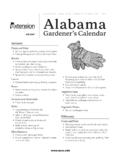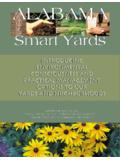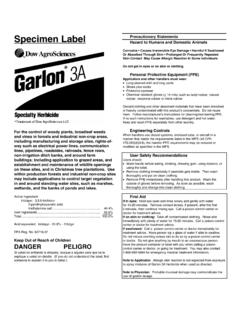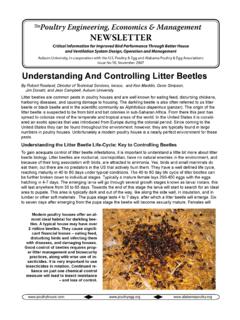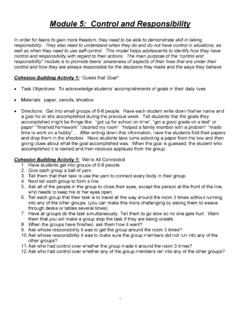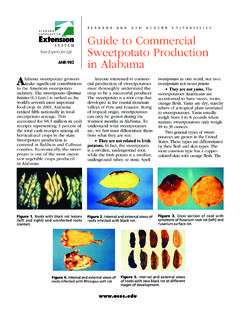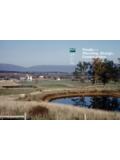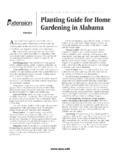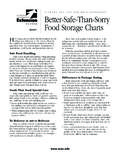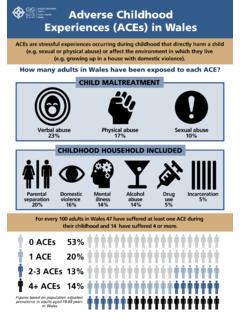Transcription of UNP-0050 - Alabama Cooperative Extension …
1 UNP-0050 Alabama A&M AND auburn UNIVERSITIESDogs and Pesticide UseIntroductionMore than 54 million American households own at least one dog (Humane Society, 2016). Dog owners often use pesticides in and around their homes to control pests. Although many pesticides are beneficial, poor planning or improper use of a pesticide product can be very toxic to dogs. Of course the best way to avoid toxicity is to avoid using chemical products. However, if these chemicals must be used be sure to read the labels, use the products properly, and be extremely careful. Remember that dogs are not just property; they are another member of the family. PesticidesA pesticide is any substance used to kill, repel, or otherwise control a pest. These include in-secticides, herbicides, fungicides, rodenticides, and disinfectants. Apartments and houses are often hosts to common pests like cockroach-es, ants, fungus, termites, and rats.
2 Weeds, grubs, and aphids can get into lawns, flowers, and vegetable gardens. Because pesticides are designed to be toxic, they can pose a risk not only to children and adults but also to pets. Dogs are exposed to pesticides when they inhale, ingest, or absorb the product through the skin. Animal studies have shown that some pesti-cides can cause cancer, reproductive problems, birth defects, central nervous system distur-bances, liver and kidney damage, and skin ir-ritation. The following compounds are some of the pesticides used in homes and gardens: 2,4-Dichlorophenoxyacetic acid (2,4-D). This pesticide is a chlorophenoxy com-pound that functions as a systemic herbi-cide and is used to control many types of broadleaf weeds. Classified as a General Use Pesticide (GUP), 2,4-D s diethylamine salt is a slightly toxic category III chemical when ingested orally.
3 However, this prod- uct is classified as a highly toxic category I chemical when exposed to the eyes. Pesti-cides containing 2,4-D bear the signal words danger poison . Used in many commercial products, 2,4-D may be found in emulsion form, in aqueous solutions (salts), and as a dry compound. Although its carcinogenic status is not clear, canine malignant lym-phoma has been associated with exposure to 2,4-D (Hayes et al., 1991). NOTE: If pesticide chemicals fall into the least toxic category, manufacturers no lon-ger have to print signal words on the labels as of February 12, 2002. Avermectin B1 (Abamectin). This compound functions as an insecticide/miticide and is used by homeowners for the control of fire ants. Abamectin is classified as a GUP, practically nontoxic category IV chemical, which has no pre-cautionary statement on its label.
4 Abamectin contains about 80% avermec-tin B1a and 20% avermectin B1b com-pounds derived from the soil bacterium Streptomyces avermitilis. Research indi-cates that chronic abamectin toxicity can affect the nervous system of dogs and cause symptoms such as pupil dilation, lethargy, and tremors (Lankas and Gordon, 1989). Allethrin. This pesticide was the first of the pyrethroids widely produced as an insecti-cide (Vijverberg et al., 1990). This synthetic compound is used almost exclusively in homes and gardens for control of flies and mosquitoes. pesticides containing allethrin are slightly toxic category III chemicals and bear the signal word caution on the prod-uct label. However, containers of technical grade D-trans-allethrin bear the signal word warning . Allethrin is used in many com-mercial products and is available as quito coils, mats, oil formulations, and as an aerosol spray.
5 Research has indicated that dogs exposed continuously to D-alle-thrin were diagnosed with liver problems (World Health Organization, 1989). Bendiocarb. This compound is an insec-ticidal carbamate that is used to control mosquitoes, flies, wasps, ants, cockroach-es, fleas, ticks, and other pests in homes. Most formulations of bendiocarb are clas-sified as GUP, but a few formulations are classified as Restricted Use pesticides (RUP), which may be purchased and used only by certified applicators. Bendiocarb is a moderately toxic category II chemi-cal and carries the signal word warning . Commercial pesticides containing bendiocarb are formulated as dusts, gran-ules, ultra-low volume sprays, and as wettable powders. Bendiocarb is absorbed through all the normal routes of exposure, but it is generally excreted rapidly and does not accumulate in mammalian tissue.
6 Signs associated with acute toxicity of carbamates in mammals are excessive salivation, chest discomfort, muscle trem-ors, and rarely death. Like other carba-mate insecticides, bendiocarb is a revers-ible inhibitor of cholinesterase, an enzyme found in the liver, pancreas, heart, serum, and the white matter of brain. True cholinesterase catalyzes the hydrolysis of acetylcholine (a neurotransmitter) to cho-line (an amino alcohol) and acetate. DCPA. This phthalate compound, also called chlorthal or chlorthal-dimethyl, is a pre-emergent herbicide used on annual grasses and annual broad-leaf weeds in vegetable crops. About 20% of the use of this compound in the United the United States is for homes and gardens. DCPA is classified as a GUP and is practically a nontoxic category IV chemical that bears the signal word caution . Commercial products containing DCPA may be for-mulated as wettable powders, granules, or as suspension concentrates.
7 Although the compound has a very low toxicity to mammals, research has indi cated that dogs exposed continuously to DCPA expe-rienced adverse effects in the liver (United States Environmental Protection Agency (EPA), 1988). Diazinon. This product is a nonsystemic organophosphate insecticide used to con-trol fleas, ants, and cockroaches in resi-dential buildings, and sucking and leaf-eating insects on home gardens. Diazinon is classified as a RUP, which may be purchased and used only by a profes-sional pest control operator. Depending on the formulation, it is a moderately toxic category II or slightly toxic category III chemical. pesticides containing diazinon bear the signal word warning or cau-tion . This insecticidal organophosphate compound is used in many commercial products and is available in dust, gran-ules, seed dressings, wettable powder, and emulsifiable solution formulations.
8 In mammals, diazinon is metabolized and excreted through the urine and feces very rapidly. The toxic effects of the compound are due to the inhibition of acetylcholin-esterase, an essential nervous system enzyme. Malathion. This compound is a nonsys-temic, wide-spectrum organophosphate insecticide suited for the control of suck-ing and chewing insects on fruits and veg-etables. Malathion is also used to control mosquitoes, flies, household insects, and animal ectoparasites. Malathion is classified as a GUP and is a slightly toxic category III chemical. Pesti-cides that contain this chemical bear the signal word caution . This insecticidal organophosphate compound is used in many commercial products and is avail-able in an emulsifiable concentrate, wet-table powder, dustable powder, and ultra-low volume liquid formulations. Malathion has been shown to depress cholinester-ase activity in animals, and can affect the central nervous and immune systems, adrenal glands, liver, and blood.
9 Avail-able evidence suggests that this chemical product is not carcinogenic, yet current data is inconclusive. Rotenone. This pesticide is a selective, non-specific botanical compound used in home gardens for insect control and on pets for lice and tick control. Rotenone is classified as a GUP, and, depending on the formulation, is classified as a highly toxic category I or a slightly toxic cat-2 Alabama Cooperative Extension System egory III compound. Rotenone formula-tions that are highly toxic bear the signal word danger, but caution in slightly toxic forms. This rotenoid plant extract is used in many commercial products, and it is available in crystalline preparations, emulsified solutions, and dusts. Research revealed that dogs exposed continuously to rotenone experienced vomiting, had reduced food consumption, and hence reduced weight gain (National Research Council, 1983).
10 Warfarin. This compound is an anticoag-ulant rodenticide used for controlling mice and rats in and around homes and animal odorless and tasteless pes-ticide is only slightly dangerous to domes-tic animals when used as directed. War-farin, classified as a GUP, bears the signal word danger for technical and high concentrations or the signal word cau-tion for low concentrations and ready-to-use baits. Warfarin is found in a variety of commercial rodenticides and comes in water soluble, ready-to-use bait, concen-trate, powder, liquid concentrate, nylon pouch, coated talc, and dust formulations. Signs and symptoms of animal exposure such as rapid breathing, weakness, pale mucous membranes, and hemorrhage are caused by the rodenticide s anti-clotting properties. The prothrombin content of the blood is reduced, and internal bleed-ing is induced.
